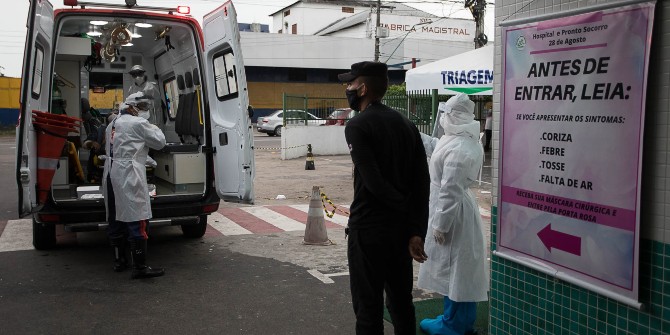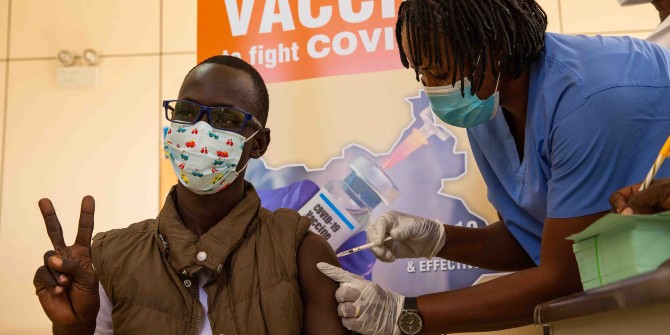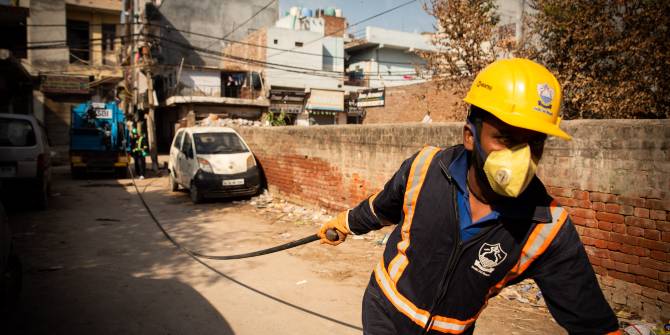Armenia lifted its lockdown in early May, when infection rates had been flatlining for three weeks. Knarik Ayvazyan (Central Bank of Armenia) and Armine Grigoryan (Fletcher School of Law and Diplomacy) use an extended SIR epidemic model to show why rates rose again in May and June.
Armenia registered its first case of COVID-19 on 1 March 2020. With cases rising, the country declared a 30-day state of emergency on 16 March: rallies and demonstrations were prohibited, events involving more than 20 people were banned, and the Ministry of Education shut all educational institutions with no reopening date specified, launching an online learning platform to try to defray educational concerns.

The country registered slowing of the infection rate (both new and active COVID-19 cases) only after the first round of stringent lockdown measures were imposed, and for the first time since the crisis began recoveries have outpaced new cases.
To understand the efficiency of lockdown we have built a realistic and extended version SIR epidemic model for Armenia (see Figure 1) with time-dependent reproduction rate of disease (R0-value) and ICU beds and age-dependent death rates. The time-dependent reproduction number is an essential criterion for scaling up the effectiveness of control interventions.
The R0-value speaks for the anticipated number of cases arising from a case infected at time t. Depending on the R0-value we can predict the dynamics of the outbreak, meaning that if the R value is below one, the outbreak will decay, while an R value larger than one forecasts a sustained outbreak.
The model presupposes the susceptible people (not yet infected) contract the virus, become exposed and infected, with a recovered (immune) or critical result. The latter entails either death or recovery (critical survivors).
Figure 1: Extended version of SIR model

Source: Authors’ estimates
For R0 (t), we used the following logistic function:

Where R0first and 0last– are the values of R0 on the first and the last day, k- shows how quickly R0 declines, x0– is the x-value of the inflection point.
The time-dependent reproduction rate allows us to model social distancing, quarantine or lockdown. Taking into account cumulative deaths per day from COVID-19 in Armenia and an extended version of the SIR model, we predict cumulative deaths per day to come as close as possible to the real numbers. By fitting the cumulative death curve, we were able to find the parameters in our model that generate predictions most closely resembling the real data.
According to the model estimates, before Armenia imposed lockdown, R0 was around 3 and sharply declined to 1.2 by late March (Figure 2). This means that every ten infected individuals would have infected 12 other people, if no containment measures had been introduced.
Figure 2: Lockdown cut the rate of infection in Armenia
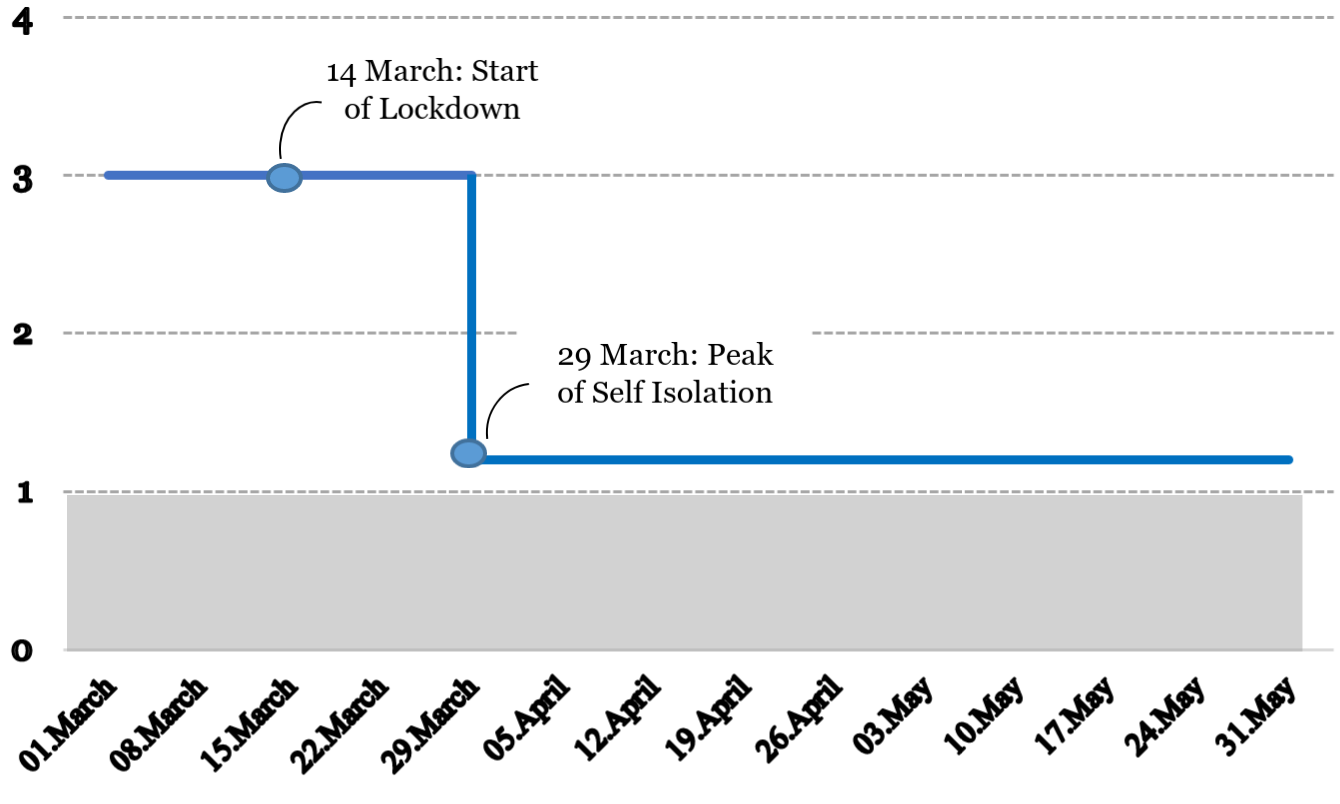
Source: Authors’ estimates
Since R0>1, the virus has the potential to spread among the population, which shows that quarantine and social distancing are necessary. Taking into account the virus’ risky rate of reproduction in April and May, the model indicates that reopening the economy is a risky move and could lead to an unprecedented health crisis.
However, Armenia began to reopen its economy, and as one would expect (and here the maxim “all models are wrong, but some are useful” comes to mind) our model projections were borne out. After relaxing restrictions on freedom of movement and commercial activity on 4 May, following almost three weeks of flat rates, Armenia has been experiencing a surge in new COVID-19 cases with the country regularly reporting triple-digit increases.
By late May, Armenia ranked 7th in the world with a record spike of 452 new cases in one day. A week later, on 7 June, it saw another record 766 one-day spike – a heavy toll for a country with a population of around three million. Today the country ranks second in the world in terms of new confirmed cases per day (Figure 3) and has one of the worst ratios of cases to deaths (Figure 4). The Health Minister has sounded the alarm on the limited number of remaining hospital beds and warned that the country would prioritise only moderate and severe cases.
Figure 3: New confirmed COVID-19 cases per day, normalised by population, 23 June 2020

Source: Johns Hopkins
Figure 4: Total confirmed COVID-19 cases v deaths per million, 24 June 2020
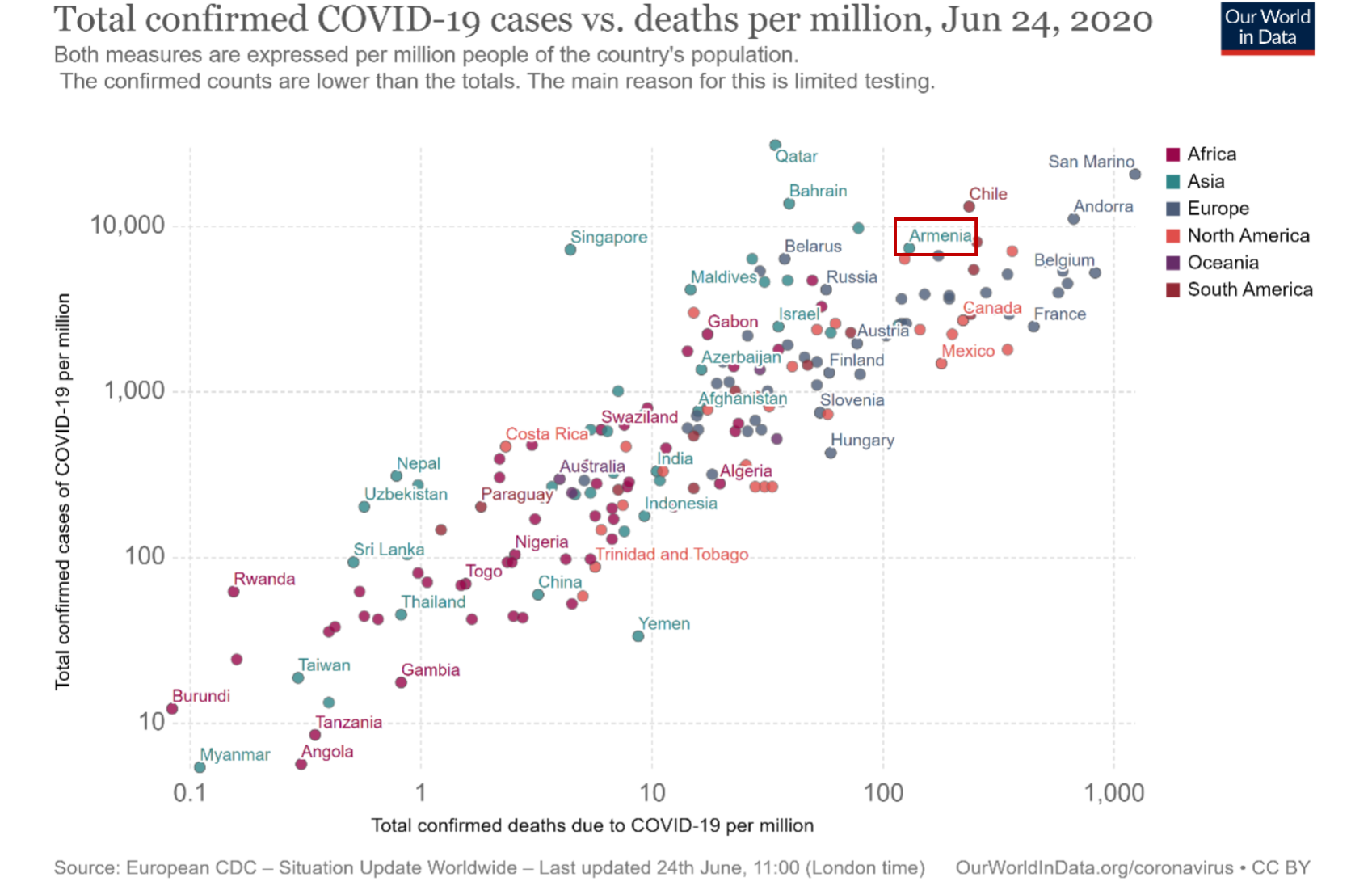
Source: Our World in Data
The government’s decision to reopen the economy spurred criticism that lockdown was being lifted too early. The Prime Minister explained that phased reopening of the economy was necessary and a pragmatic move before a vaccine became widely available. He added that the country had to walk a fine line between public health and economic recovery, since weeks of total lockdown had taken a significant toll on Armenia’s economy. Incidentally, the government did not initially make masks mandatory in public places, referring to WHO directives (which were changed in June 2020).
Armenia struggled to find an appropriate balance between health and the threat of severe economic and social disruption. The state of emergency and associated restrictions had been extended through 14 May, and were extended for consecutive two terms – until 13 June and then 13 July. However, the authorities do not anticipate re-imposing the lockdown. Moreover, restaurants with outdoor and indoor seating are open, as have shopping centres and factories, and Armenians can travel without restrictions.
Assessment of lockdowns is essential for real-time situational awareness and for delivering answers on how to improve the response in future. While the capacity of Armenia’s healthcare system could be described as adequate, it is imperative for the government to pursue the policy of testing, contact-tracing and isolation. Intense and aggressive containment – controlling the spread, swiftly testing suspected individuals, implementing quarantine mechanisms, and expanding on community containment – should be the overarching strategy of the Armenian government. However, the key lies in better co-operation between the government and society.
This post represents the views of the authors and not those of the COVID-19 blog, LSE, the Central Bank of Armenia nor Fletcher School of Law and Diplomacy. They would like to thank Ros Taylor for her valuable contribution.


